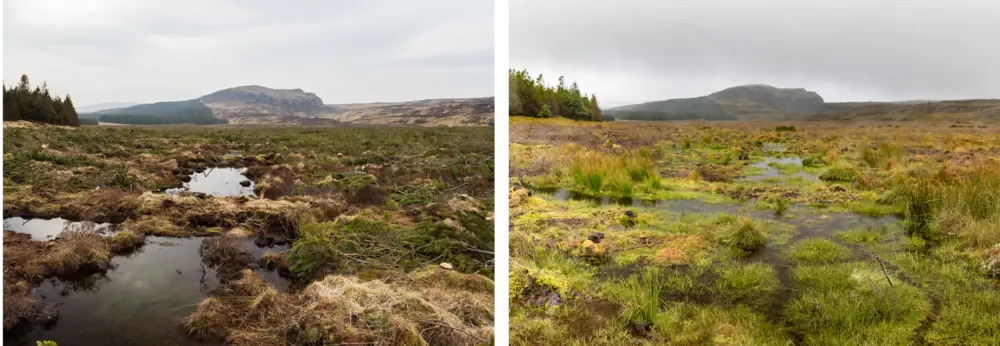How we are helping peatlands
How we are helping peatlands
Peatland restoration is an integral part of managing land sustainably. It involves tackling a legacy of growing trees in areas now protected from planting by current environmental policy and practice.
FLS has begun the restoration of almost 7,500 hectares of land from 2014 to 2020. This is done in various ways and can involve removing trees, but always involves re-wetting the peatlands to restore their hydrological behaviour. The goal of the techniques is to help the valuable peatland habitats to recover quickly.
The restoration work can appear to be quite dramatic and indeed counter-intuitive at first. Still, we often see the desirable peatland species such as cotton grass and sphagnum mosses return within a year of the restoration projects starting.

How are we going to do it?